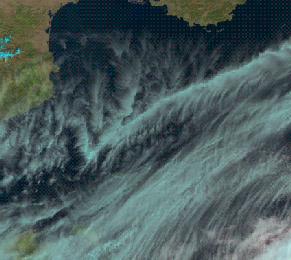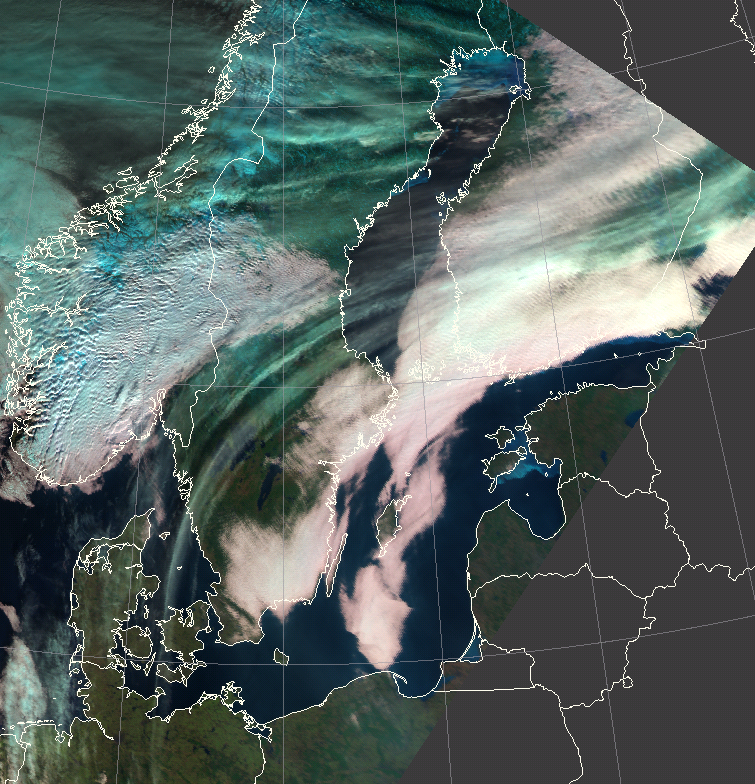Stratiform cirrus clouds
The Natural Colour RGBs are created from three channels all measuring reflected solar radiation. Ice clouds are usually seen in these RGBs because they reflect the shortwave radiation. Ice clouds are depicted in cyan colour, since ice crystals absorb more radiation in the 1.6 micron channel than in the 0.63 and 0.87 channels, and so the channels 1 and 2 contribute much more to the satellite measured radiation than channel 3A. The MetOp AVHRR Natural Colour RGB image below shows stratiform thin cirrus clouds (taken on 14 March 2014 at 09:41 UTC).

MetOp AVHRR Natural Colour RGB image, 14 March 2014 09:41 UTC
Cirrus clouds are high level clouds consisting mainly from ice crystals. They can have various structures, and they typically consist of thicker and thinner parts. Thin cirrus clouds are semi-transparent letting some radiation coming through from below. Through the semi-transparent regions one can recognize the underlying surface/clouds ‘blurrily’, like in the image below (taken on 25 February 2014 at 10:34 UTC).

MetOp AVHRR Natural Colour RGB image, 25 February 2014 10:34 UTC
Semi-transparent clouds are easier to recognize over dark ‘background’ like sea or ocean, see the image below (taken on 11 March 2014 at 09:58 UTC). Cirrus clouds could be recognized by their colour, structure, semi-transparent nature. The thinnest clouds may not be seen because their reflection is week. They can be better detected by using infrared channel differences.
MetOp AVHRR Natural Colour RGB image, 11 March 2014 09:58 UTC
Explanation of the cyan colour for thin stratiform cirrus clouds in the Natural Colour RGB (see the recipe):
• With a strong contribution of the green and the blue colour beam over thin cirrus clouds, the resulting colour is cyan.

